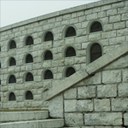0165 From Italian Monuments to the Fallen of World War I to Fascist War Memorials
Identifiers (Article)
Identifiers (Files)
Abstract
This paper describes the different ways of commemorating the fallen of World War I in Italy between 1918 and 1940. From the collection of examples emerges that there was no homogeneity in the forms of remembrance during these two decades. Rather, we find both a continuous renewal and overlapping of different kinds of commemorative forms. Right after the end of World War I, a spread of spontaneous local monuments is discernible, though the many small war cemeteries rising near the former battlefield areas were already beginning to be perceived as a problem. Shortly before World War II, the construction of huge ossuaries and, later, war memorials was fostered by the Fascist Regime which availed itself of the fallen for ideological and political purposes. Between these two extremes, also other forms of commemoration such as parks or avenues of remembrance were realized. This paper tries not to force coincidences between history and the history of architecture; nevertheless, it understands monuments, parks and avenues of remembrance, ossuaries, and war memorials as a kind of seismograph sensitive to the period’s shifts and jolts, and to Fascist policies in particular.
Statistics


License

This work is licensed under a Creative Commons Attribution-NonCommercial-NoDerivatives 4.0 International License.



